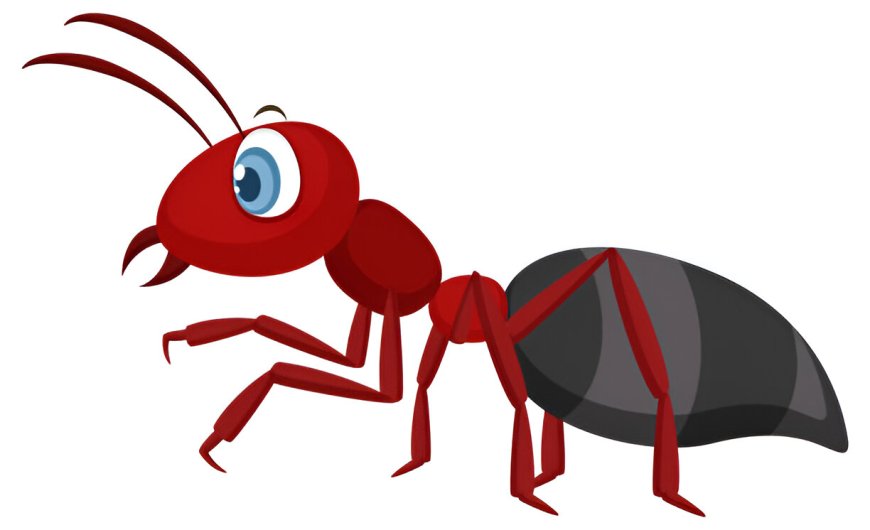The Ant Who Wanted to Fly Believing in the Impossible
An inspiring tale of an ant who dreams of flying, teaching kids the power of believing in the impossible and never giving up on their dreams.

In a quiet corner of the forest, far from where the birds sang and the butterflies danced, lived a tiny ant named Pip. Pip was not like the other ants in his colony. While they focused on digging tunnels, storing food, and following orders, Pip spent his days gazing at the sky, mesmerized by the creatures that soared above. His heart ached with one dream: he wanted to fly.
From the moment he could crawl, Pip believed he was meant for more than crawling in line and lifting crumbs. He saw the birds glide with grace, the bees buzz through blossoms, and even the butterflies flutter freely. “Why not me?” he’d ask aloud. His fellow ants would laugh kindly but dismissively. “Ants don’t fly, Pip. We build, we work, we serve. That’s who we are.”
But Pip refused to accept the limits placed on him. To everyone else, it was impossible. To Pip, it was simply a challenge waiting to be overcome.
Dreaming Beyond Limitations
Children and adults alike have long been drawn to tales that push the boundaries of what’s possible. The story of Pip the ant resonates because it reflects a universal truth: greatness begins with belief. From the Wright brothers dreaming of air travel to inventors transforming ideas into realities, every leap forward starts with the conviction that the impossible is possible.
In Pip’s world, that conviction was unwavering. He gathered feathers that fell from above, studied the arc of birds in flight, and designed wings from leaves and spider silk. Time after time, his inventions failed. He fell. He crashed. He was laughed at. Yet, each failure taught him something new.
Persistence is often misunderstood. It's not merely about refusing to give up—it's about learning, adjusting, and daring to hope again. Pip embodied this spirit.
The Power of Storytelling
Stories like “The Ant Who Wanted to Fly” don’t just entertain—they inspire. They teach children resilience, creativity, and the courage to dream. That’s the heart of author Mollie Nelson’s mission: to spark imagination through meaningful stories that celebrate determination, kindness, and wonder.
Mollie’s books are not only about magical worlds and charming creatures—they are tools that help young minds navigate real-life emotions and challenges. The ant who dreams of flying becomes a symbol of every child who feels different, of every adult who dares to chase a distant goal.
Her engaging narratives are filled with rhythm and heart, capturing the attention of young readers while embedding important life lessons. “The Ant Who Wanted to Fly” does this flawlessly, reminding readers that self-belief can move mountains—even if you’re only the size of an ant.
Where Creativity Meets Purpose
The journey of Pip also raises important questions: Who defines what’s possible? Why do we limit ourselves based on tradition or expectation? Just as Pip challenges the belief that ants cannot fly, we are invited to question the invisible walls that surround our dreams.
Mollie Nelson’s storytelling doesn’t just push boundaries—it tears them down. Her characters often start as underdogs, face mockery or misunderstanding, and ultimately discover their true strength. Through this arc, children learn that failure is not the end, but part of the path to success.
Pip's journey was never about wings; it was about proving to himself that dreams are worth chasing, even when others say you shouldn’t.
A Literary Journey That Inspires
Mollie Nelson’s books, including “The Ant Who Wanted to Fly,” are featured on the Wompus Stompus book website, a treasure trove of stories that uplift and empower. This platform celebrates children’s literature that entertains with purpose—books that dare to dream and encourage readers to do the same. From whimsical adventures to heartfelt narratives, each story echoes with messages of hope, resilience, and imagination.
The website serves as a hub for readers, parents, and educators seeking high-quality children’s literature. It not only showcases Mollie Nelson’s diverse portfolio but also offers valuable resources for sparking creativity in young minds. Whether you’re looking for bedtime stories that teach or books that stir curiosity, the Wompus Stompus collection delivers.
Lessons That Last a Lifetime
At the heart of “The Ant Who Wanted to Fly” lies an important message: it's okay to be different. Pip never fit in with the rest of the ants, but he never let that stop him. His belief in something greater allowed him to keep going despite the odds.
Children often face pressures to conform—to fit into a mold, to think small, to stay safe. This story gives them permission to do the opposite. It tells them that it’s okay to dream big, to try new things, and to fail forward. It’s okay to be the only one who believes in a dream.
For parents, teachers, and caregivers, Pip becomes a talking point. “What’s your flying dream?” they can ask. These discussions are more than whimsical—they help build emotional intelligence, creativity, and problem-solving skills.
The Magic of Belief
What makes belief so powerful? It’s intangible, yet it changes everything. For Pip, belief gave him the courage to climb trees, build wings, and leap. It didn’t matter that he fell. What mattered was that he tried.
This is the essence of what Mollie Nelson captures in her books: the transformation that occurs when we believe in ourselves. Belief fuels effort. Effort builds resilience. And resilience creates outcomes that once seemed unreachable.
Pip’s final leap, whether he soars or not, becomes secondary. The real flight happens in his heart—he becomes the ant who dared, who dreamed, who believed.
A Story for All Ages
Though written for children, the lessons in “The Ant Who Wanted to Fly” resonate deeply with readers of all ages. Adults, too, can find themselves in Pip. We’ve all had dreams others didn’t understand. We’ve all failed, doubted ourselves, or feared ridicule.
But like Pip, we also carry the potential to rise.
This is why storytelling is so important—not just for entertainment, but for empowerment. Through the magic of narrative, we remember what it feels like to dream. We reconnect with the child in us who once looked at the sky and said, “Why not me?”
Mollie Nelson's writing reminds us that storytelling is a mirror. It reflects not just who we are but who we could become if we dared to believe a little more.
Conclusion
“The Ant Who Wanted to Fly” is more than just a children’s tale. It’s a manifesto of hope. It teaches us that dreaming is brave, trying is noble, and believing in the impossible is the first step toward making it real.
Mollie Nelson has created a literary gem that belongs on every child’s shelf and in every grown-up’s heart. Her work, as seen through the Wompus Stompus book website, stands as a beacon for all who seek to inspire and uplift through story.
























































































































































